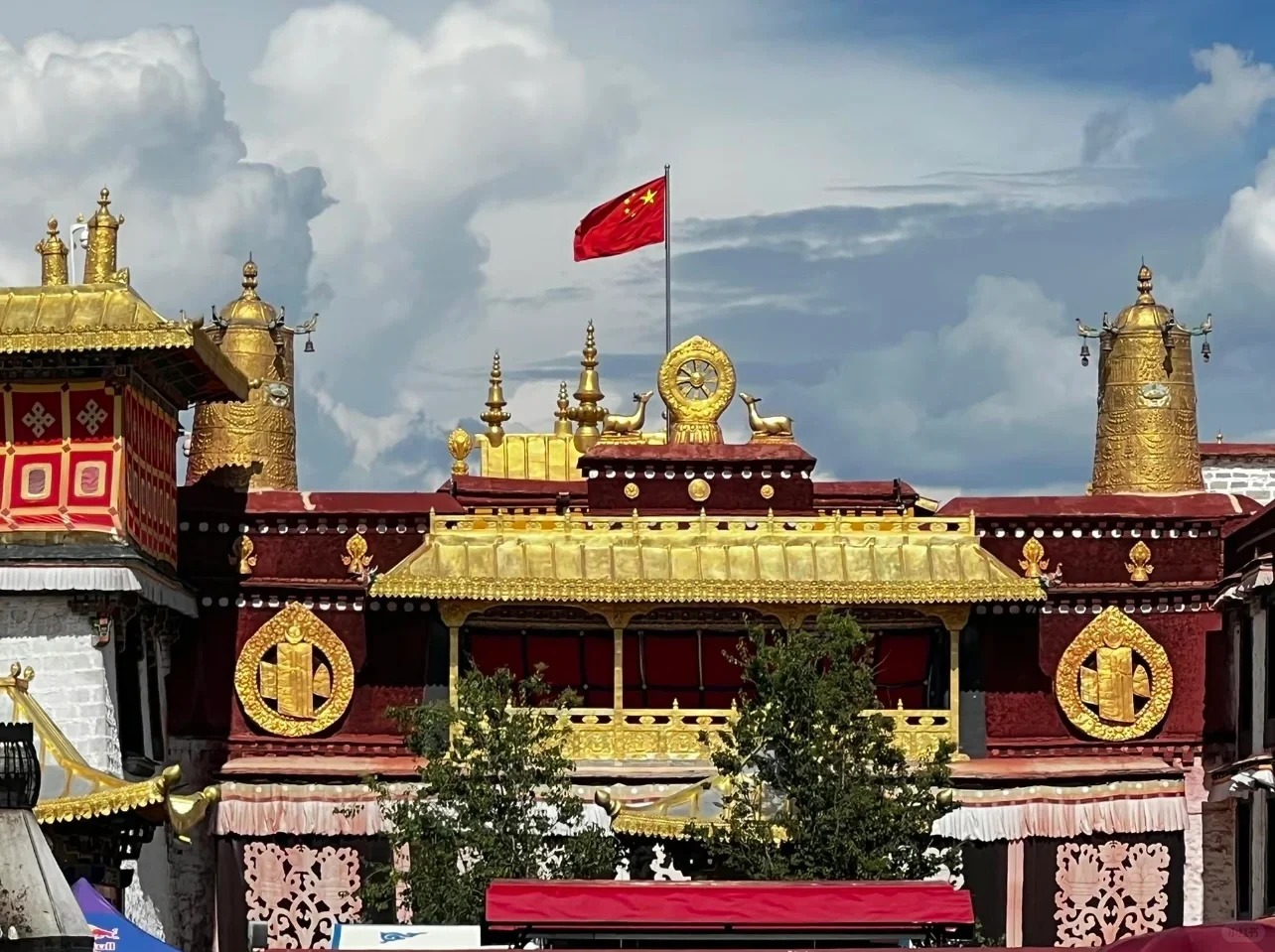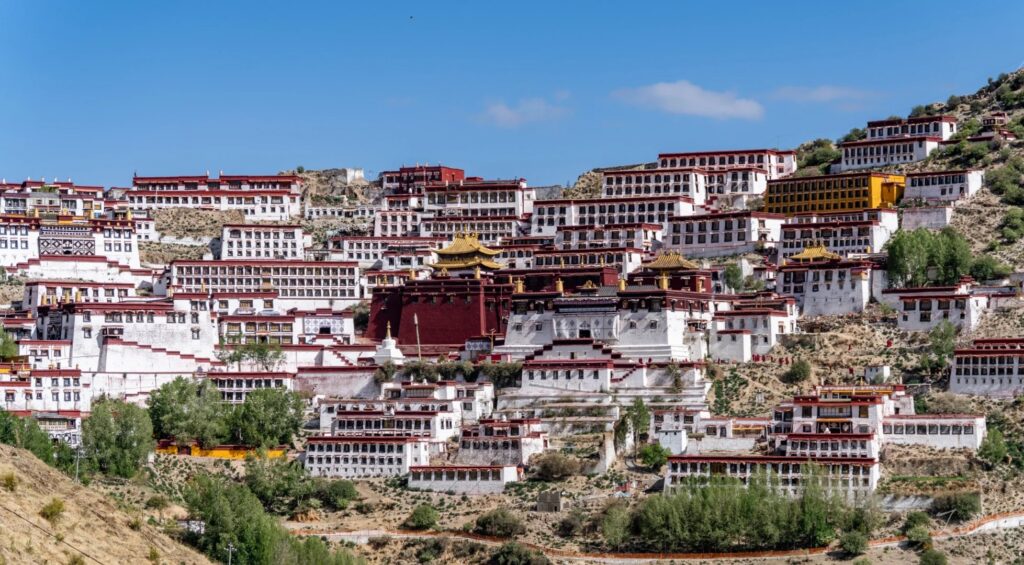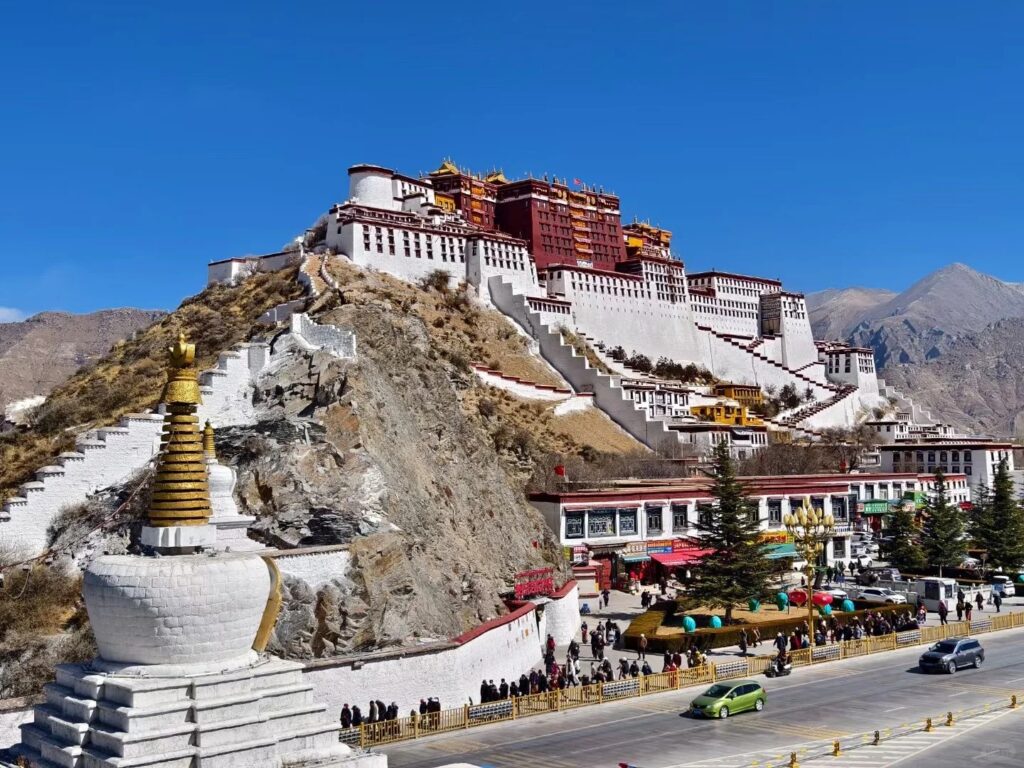Visiting Information
| Information | Details |
|---|---|
| Chinese Name | 大昭寺 (Dàzhāo Sì) |
| Location and Address | Barkhor Street, Chengguan District, Lhasa, Tibet Autonomous Region, China |
| Opening Time/Hours | 7:00 AM – 6:30 PM (May to October) 8:00 AM – 6:30 PM (November to April) |
| Entrance Fee | CNY 85 (May to October) CNY 35 (November to April) |
| How to Get There | By Metro: Not available By Bus: Take bus No. 1, 2, 3, 4, 5, 6, 8, 9, 10, 12, 13, 15, 17, 18, 19, 20, 21, 23, 24, 25, 26, 28 to Jokhang Temple Square By Taxi: Tell the driver “Dàzhāo Sì” or “Jokhang Temple” |
| Best Time for Visit | May to October, early morning to avoid crowds |
| Contact Info | +86 891 6832598 |
Overview
Jokhang Temple, also known as Qoikang Monastery, is the spiritual heart of Tibet and one of the most revered religious sites in Tibetan Buddhism. Located in the center of old Lhasa, it is part of the UNESCO World Heritage Site “Historic Ensemble of the Potala Palace”. The temple is renowned for its unique blend of Tibetan, Nepalese, and Indian architectural styles, and houses numerous important Buddhist relics, including the Jowo Shakyamuni Buddha statue, believed to be the most sacred image in Tibet.
Historical Background
Jokhang Temple was founded in 652 AD by King Songtsen Gampo, the 33rd king of the Yarlung Dynasty and the first emperor of a unified Tibet. The temple was built to house a statue of Buddha brought to Tibet by Princess Wencheng of the Chinese Tang Dynasty, who married King Songtsen Gampo. Over the centuries, the temple has been expanded and renovated multiple times, with each era leaving its mark on the architecture and artwork. Despite facing damage during various historical periods, including the Cultural Revolution, Jokhang Temple has been restored and continues to play a central role in Tibetan Buddhism and culture.
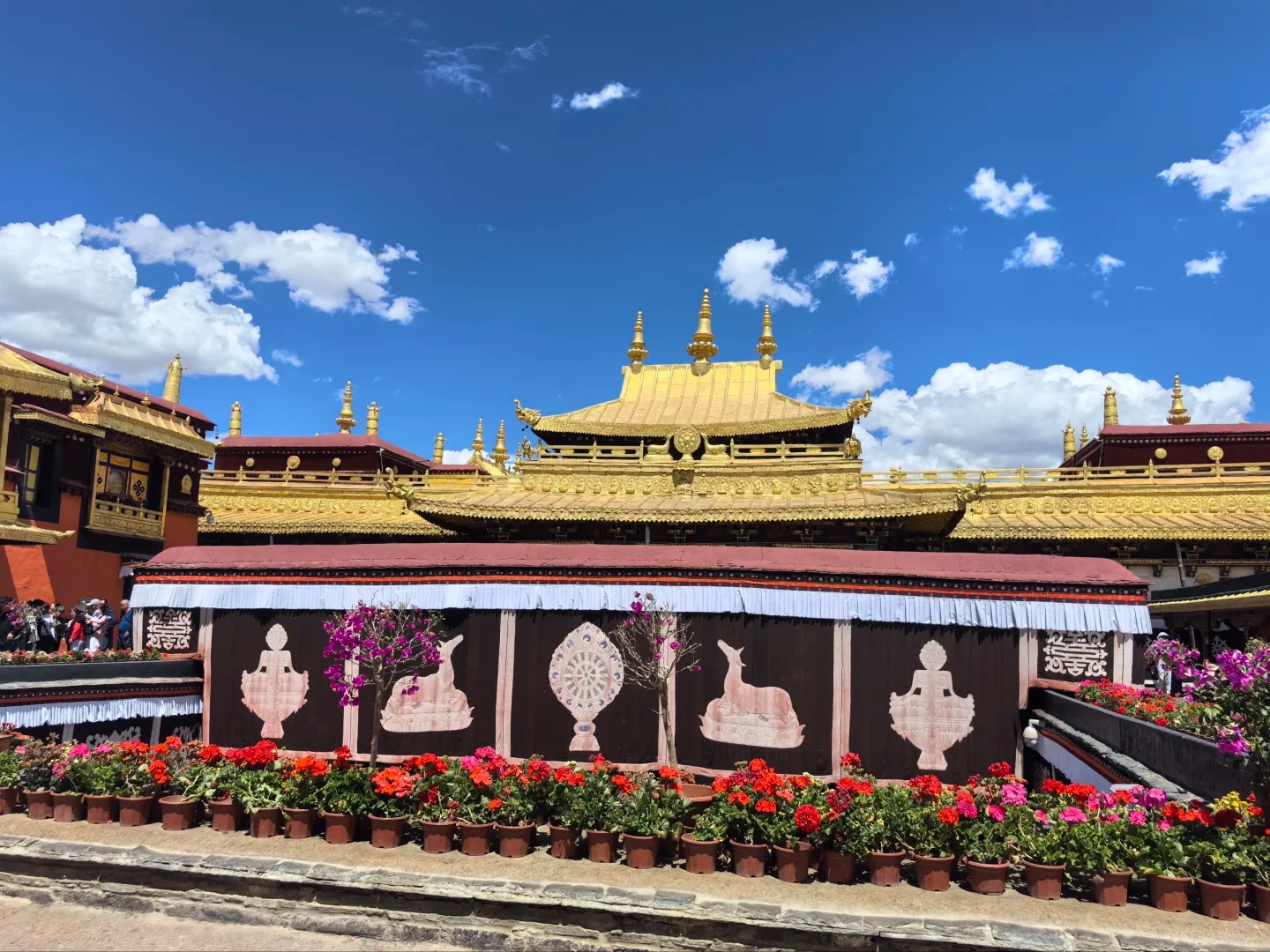
Architectural Features
- Main Hall: The centerpiece of Jokhang Temple is its main hall, which houses the famous Jowo Shakyamuni Buddha statue. The hall features intricate wood carvings, colorful murals depicting Buddhist stories and Tibetan history, and massive pillars adorned with traditional Tibetan decorations.
- Golden Roof: The temple’s most distinctive external feature is its golden roof, adorned with two golden deer flanking a Dharma wheel. This iconic rooftop is visible from many parts of Lhasa and serves as a beacon for pilgrims and visitors alike.
- Courtyard and Circumambulation Path: The temple complex includes a large courtyard where pilgrims gather, and a circumambulation path (kora) that encircles the entire temple. This path is lined with prayer wheels and is constantly filled with devotees performing clockwise circuits as a form of meditation and devotion.
- Chapels and Shrines: Jokhang Temple contains numerous smaller chapels and shrines dedicated to various Buddhist deities and historical figures. These spaces are richly decorated with statues, thangkas (religious paintings), and offerings from devotees.
Cultural Importance
Jokhang Temple holds immense cultural and spiritual significance for Tibetan Buddhists. It is considered the most sacred and important temple in Tibet, drawing pilgrims from across the Tibetan plateau and beyond. The temple plays a central role in many Tibetan Buddhist festivals and rituals, including the Monlam Prayer Festival. As a repository of Tibetan art, architecture, and religious artifacts, Jokhang Temple serves as a crucial link to Tibet’s rich cultural heritage and spiritual traditions.
Surrounding Attractions
- Barkhor Street: Encircling Jokhang Temple, Barkhor Street is a bustling circular street that serves as a pilgrimage route and a lively market. Visitors can explore traditional Tibetan shops selling prayer wheels, incense, religious artifacts, and local handicrafts while observing pilgrims performing prostrations and circumambulations.
- Potala Palace: Located about 2 kilometers northwest of Jokhang Temple, the Potala Palace is another iconic landmark of Lhasa. This massive fortress-like structure was the winter palace of the Dalai Lamas and is now a museum showcasing Tibetan art, history, and culture.
- Ramoche Temple: Situated north of Jokhang Temple, Ramoche Temple is considered the sister temple to Jokhang. It houses another important statue brought to Tibet by a Chinese princess and features unique architectural elements blending Tibetan and Chinese styles.
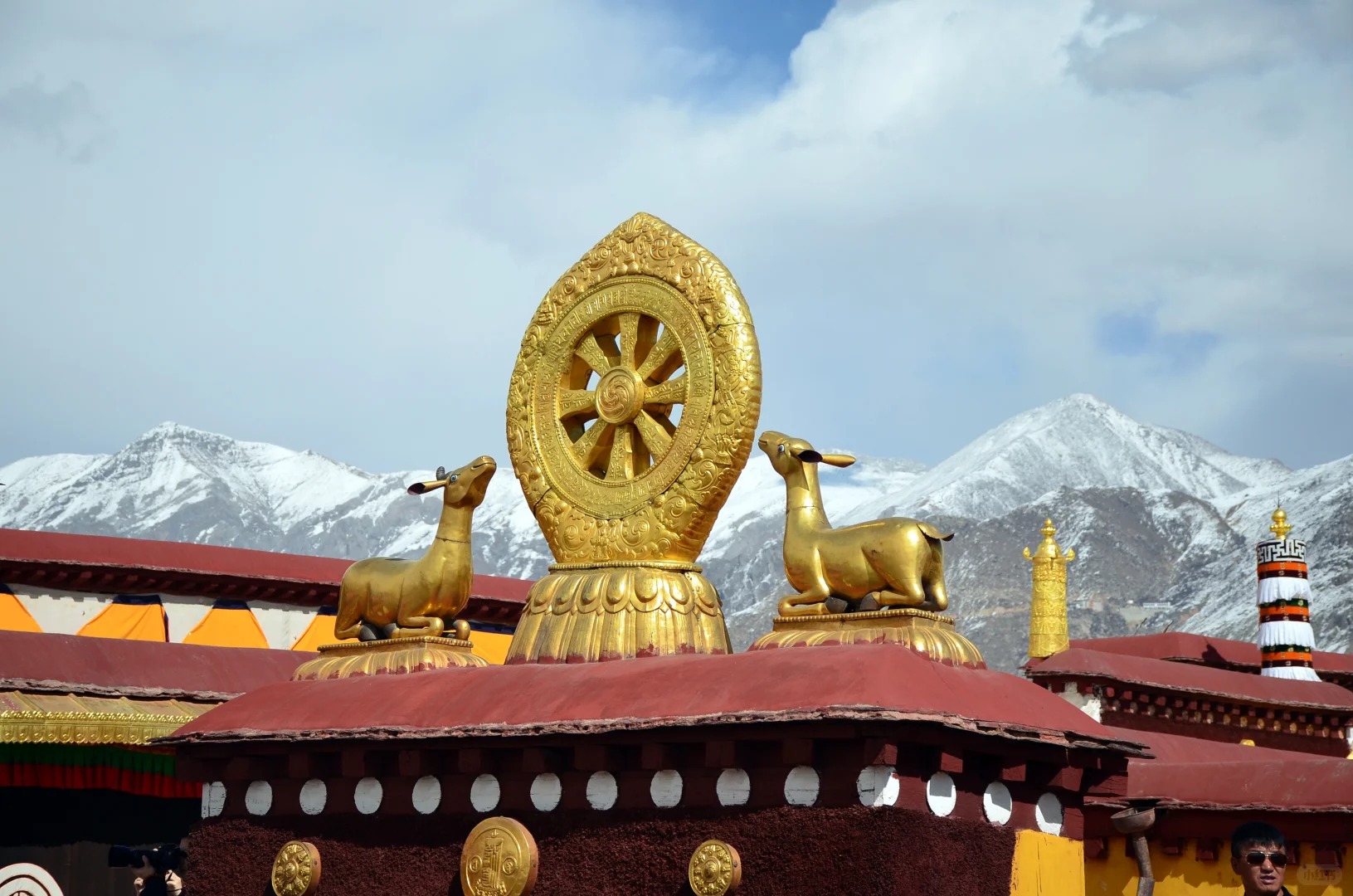
Photography Opportunities
- Golden Roof and Exterior: The golden roof of Jokhang Temple, especially when illuminated by the morning or evening sun, offers stunning photography opportunities. The exterior of the temple, with its blend of architectural styles and constant flow of pilgrims, provides rich visual material for both wide-angle shots and detailed studies.
- Pilgrim Activities: The devotional activities of pilgrims, including prostrations, circumambulations, and prayer offerings, present unique opportunities for capturing the living spiritual traditions of Tibet. Early morning and late afternoon often offer the best light and atmosphere for these scenes.
- Interior Artwork: While photography inside the temple is restricted in many areas, where permitted, the intricate murals, statues, and architectural details provide fascinating subjects for those interested in religious art and Tibetan culture.
Modern Importance
- Religious Center: Jokhang Temple continues to serve as the most important center of Tibetan Buddhism, playing a crucial role in maintaining and transmitting Tibetan religious traditions and practices. It remains an active place of worship and pilgrimage, essential to the spiritual life of Tibetan Buddhists.
- Cultural Preservation: As a UNESCO World Heritage site, Jokhang Temple is vital in preserving Tibetan cultural heritage. The ongoing conservation efforts at the temple help maintain ancient artworks, architecture, and artifacts, ensuring that future generations can experience and learn from Tibet’s rich history.
- Tourism and Economic Impact: Jokhang Temple is a major tourist attraction, drawing visitors from around the world to Lhasa. This tourism contributes significantly to the local economy, supporting businesses, hotels, and artisans in the surrounding area.
- Educational Resource: The temple serves as an invaluable resource for scholars, researchers, and students of Tibetan history, art, and Buddhism. It provides unique opportunities for studying Tibetan culture, religious practices, and artistic traditions in their original context.
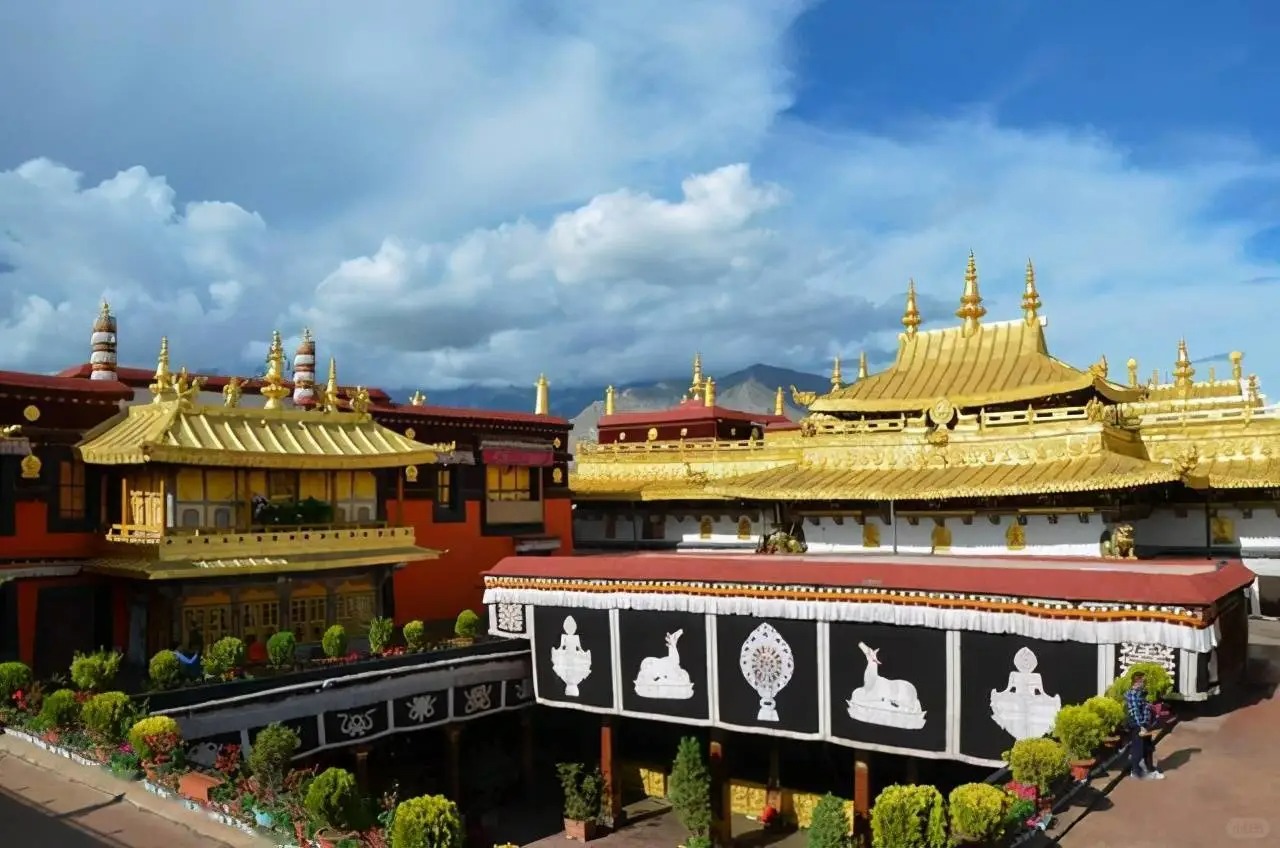
FAQ
- What is Jokhang Temple famous for?
Jokhang Temple is famous for being the spiritual heart of Tibet and one of the most sacred sites in Tibetan Buddhism. It’s renowned for housing the Jowo Shakyamuni Buddha statue, believed to be the most sacred image in Tibet, and for its unique blend of Tibetan, Nepalese, and Indian architectural styles. - What’s inside Jokhang Temple?
Inside Jokhang Temple, visitors can find the revered Jowo Shakyamuni Buddha statue, numerous chapels and shrines dedicated to various Buddhist deities, intricate murals depicting Buddhist stories and Tibetan history, ancient religious artifacts, and beautiful examples of Tibetan religious art and architecture. - Is Jokhang Temple free?
No, Jokhang Temple is not free. There is an entrance fee that varies depending on the season: CNY 85 from May to October, and CNY 35 from November to April. - Is Jokhang Temple worth visiting?
Yes, Jokhang Temple is definitely worth visiting. As the most sacred temple in Tibet and a UNESCO World Heritage site, it offers visitors a unique opportunity to experience Tibetan Buddhist culture, witness ancient religious practices, and admire stunning religious art and architecture. - What to do in Jokhang Temple?
In Jokhang Temple, visitors can explore the main hall and various chapels, observe Tibetan Buddhist rituals, admire the ancient architecture and artwork, join pilgrims in circumambulating the temple, and if permitted, view the sacred Jowo Shakyamuni Buddha statue. - How do I get to Jokhang Temple in the local city?
In Lhasa, you can reach Jokhang Temple by taking any of the city buses numbered 1, 2, 3, 4, 5, 6, 8, 9, 10, 12, 13, 15, 17, 18, 19, 20, 21, 23, 24, 25, 26, or 28 to Jokhang Temple Square. Taxis are also readily available; simply tell the driver “Dàzhāo Sì” (大昭寺) or “Jokhang Temple”. - How to visit Jokhang Temple?
To visit Jokhang Temple, purchase tickets at the entrance. It’s advisable to arrive early in the morning to avoid crowds and witness morning rituals. Dress modestly and respectfully, as it is an active place of worship. Be mindful of photography restrictions inside the temple. Consider hiring a local guide for deeper insights into the temple’s history and significance. Remember to walk clockwise around the temple and spin prayer wheels in the same direction as a sign of respect.


